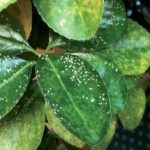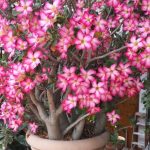Trees provide structure, screens and shade, as well as color that continues throughout the seasons, creating a sense of enclosure, and their height draws the eye up and out, helping to connect the land and sky – no reason if chosen well Do this. A chic outdoor space should stop you from introducing them.
Your tree needs a place in a small garden, so find a tree that will be of interest year-round: a tree that blooms for a week in spring but looks ordinary the rest of the year really isn’t enough.
In very tight spaces, trimmed and trained plants are best, either in the ground or in containers, while carefully sculpted trims can also create a focal point.
1. Amelanchier
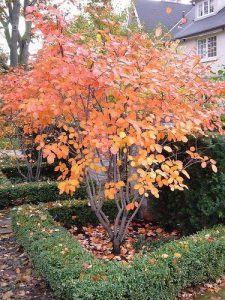
Amelanchiers have featured heavily in garden shows in the past couple of years, as designers have displayed their value as choice trees for confined spaces.
Amelanchier lamarckii (10m x 12m), the snowy Mespilus, is often grown as a multi-stemmed showstopper but can also be trained as a light standard. In spring, starry white flowers cover its branches, while its bronze foliage spreads, while small leaves often turn fiery reds and yellows in fall.
They do best in acidic soil, so plant them in heather compost. These tall, slender, bush-like trees make for an excellent screen of subtlety.
2. Flowering dogwood
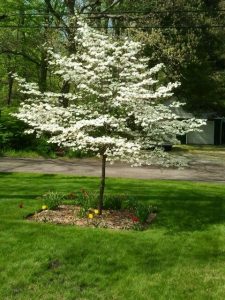
Flowering dogwoods have long been for long time a favorite, with their star-shaped flowers appearing in late spring, followed by showy red and orange foliage in fall, and strawberry-like fruit that lasts into winter.
Good varieties include Cornus kousa (7m x 5m), which bears spreading branches smothered in creamy white blossom in early summer and deep-pink bracts in late spring and orange leaves in autumn, and Cornus mas (5m x 5m), the Cornelian cherry, The dwarf stature emerges when clusters of yellow flowers shade bare branches.
3. Crab apple (malus)
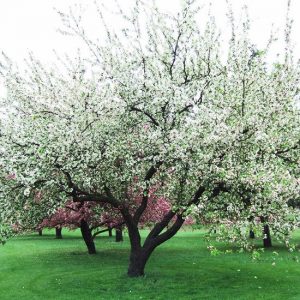
Flowering crab crabapple produce a double whammy of eye-catching blossoms in spring, followed by attractive fruits in autumn.
A good variety is ‘Evereste’ (8m x 8m, but slow-growing). It produces fragrant white and pink flowers in spring that attract bees, followed by orange-yellow fruits which can be made into jam.
The slow-growing Japanese crab, Malus Floribunda, is also less vigorous, its horizontal branches covered in crimson buds in the spring, which open to blush-pink and white scented blooms. The nice thing about malus is that you can control their size and shape like an apple.
4. Yaupon Holly
Yaupon holly is an upright shrub or small tree with small dark green leaves and a pale gray bark with white patches.
The female plant bears bright red berries. There are many varieties to choose from, and whether you want a columnar or pendant or other shape, you should be able to find something that works for you.
This plant is slow growing, with fairly dense foliage and branches. It’s perfect for dense hedges and needs careful pruning if you want it as a small tree.
5. Eastern Redbud
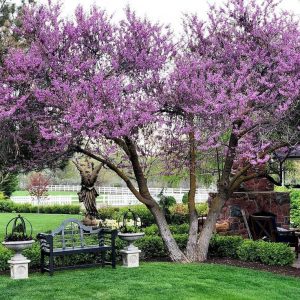
A native tree species of the eastern United States, the eastern redbud is one of the easiest trees to grow.
It adapts well to most conditions and is the perfect size for most city gardens or small yards.
One of the best parts of this tree are the pretty pink flowers that bloom in early spring.
Even without flowers, Eastern Bauhinia has heart-shaped leaves that grow big enough to hold a table and chair under the lower branches.
5. Crepe Myrtle
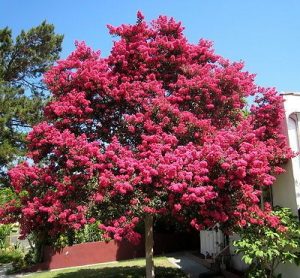
Crepe myrtles are perfect trees for the South. They are small to medium deciduous shrub or small tree.
They have beautiful late spring and early summer flowers, attractive bark, and colorful fall foliage, making them beautiful trees all year round.
It is a common misconception that Crepe Myrtles are native to the US. The Chilopsis linearis (Desert Willow) If you live in the American Southwest, this is a great homegrown option.
